#imperial Rome
Explore tagged Tumblr posts
Text









hermes aesthetic “blood of rome”
misc. male characters masterlist
series: those about to die, 2024
#hermes#those about to die#tatd#alessandro bedetti#ancient rome#circus maximus#imperial rome#rome#hermes and domitian#domitian#domitian flavianus#titus flavianus#flavian dynasty#Spotify
80 notes
·
View notes
Text
"Marcia may be remembered as the most powerful of imperial [Roman] concubines, since multiple sources record not only her influence on politics but also her participation in the successful assassination of an emperor and the choice of his replacement. In many ways, she appears indistinguishable from a Roman empress: she had a political faction, exercised influence, and enabled her chosen heir to succeed. However, Marcia still fell into the role of the concubine due to her lack of a powerful family or official status, as well as, in particular, her lack of children. [...] The discourse about her is ultimately ambiguous and confusing; she protects Commodus and supports the Empire, yet also brings about the end of his dynasty and overthrows the social order entirely. Marcia does not fit into any of the prescriptive molds offered by our elite male ancient historians, which may be one major reason for her comparative neglect in both ancient and modern scholarship."
— Anise K. Strong, "Powerful concubines and influential courtesans," Prostitutes and Matrons in the Roman World
78 notes
·
View notes
Text

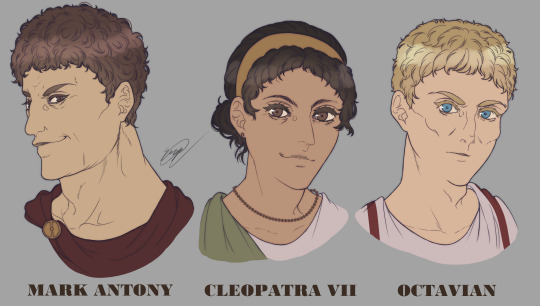
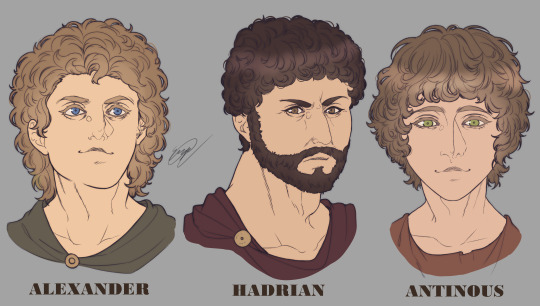
(Full view plz)
Some historical characters that will be making an appearance in the webcomic I'm developing!
#webcomic#ancient history#ramesses ii#hatshepsut#amasis#mark antony#cleopatra vii#octavian#augustus#alexander the great#hadrian#antinous#ancient egypt#ancient rome#ancient greece#roman egypt#hellenistic egypt#imperial rome#hellenistic period#republican rome#ptolemaic egypt#shmswart#thefollowersart
144 notes
·
View notes
Text


Imperator Caelus (Caelo), formally "Adored by Heaven." Incumbent ruler of the metropolis of Clara Lucerna and her imperial claims. Enjoys the exotic and expensive furnishings afforded by his blossoming empire.
#fantasy#surreal#roman#adenfel#imperator caelus#oc#original character#worldbuilding#sci fi and fantasy#illustration#imperial rome#greco roman#look at my weird colorful mish mash ancient meditteranean scifantasy boy.#eyepatch
33 notes
·
View notes
Text
“A woman’s face with nature’s own hand painted / Hast thou, the master-mistress of my passion”

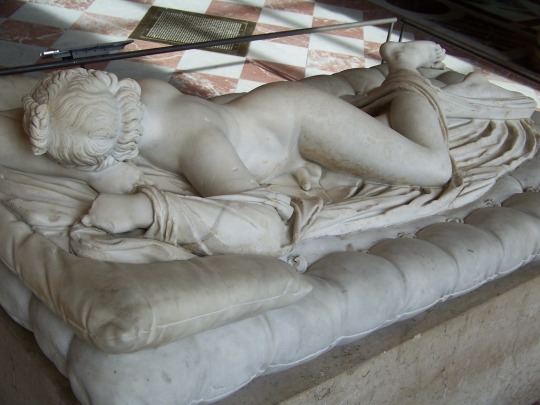
Lines from the poem Sonnet 20 by William Shakespeare (1609) one of his texts most noted for the theme of sexual ambiguity, and the sculpture Sleeping Hermaphroditus, an Imperial Roman copy of a Hellenistic original by Polycles (circa. 155 BC) rediscovered during the early 1600s and subsequently accented with a marble pillow sculpted by Bernini in 1620; now housed in The Louvre, Paris.
#literature#english literature#dark academia#aesthetic#poetry#art#history#roman#imperial rome#ancient greece#hellenistic#hellenic art#greek art#roman art#hermaphrodite#lgbtq#lgbtqia#shakespeare#renaissance#italian renaissance#english renaissance#bernini#louvre#paris#sculpture#beauty#web weaving#ancient art#marble statue#gender
285 notes
·
View notes
Text
Dorestad Key

Keys are a surprising artefact from the Merovingian and Carolingian dynasties. Roman keys are short and rounded and are of high quality. Merovingian keys are longer, thinner and sometimes very weirdly and irregularly shaped.
Carolingian keys become shorter again and are distinguishable by their rounded handles which usually have an openwork cross decoration in them.
Merovingian era keys were in the possession of women, who would wear them from chatelaines down their belts. Wearing keys along with jewelry signified that the woman in question was in charge of the household. She was a free woman and was head of the family house. It would also mean that when the husband left for trade/pillaging, she would be left in complete charge rather than the oldest son or the man’s father.
Keys are closely associated with locks and protecting valuable things from others. Everything a family had: a house, kettle, lands, trade goods, … were under the guard of a woman.
RMO Leiden, the Netherlands
Museum nr: WD 984
Found in Dorestad (Merovingian Era) - Utrecht, The Netherlands
#merovingian#frankish#carolingian#charlemagne#frisian#viking archaeology#field archaeology#merovingian archaeology#archaeology#field archaeologist#archaeologists#history#Roman#ancient rome#imperial Rome#early middle ages#dark ages#feminism#historic feminism#feminism history
89 notes
·
View notes
Text
youtube
I, Claudius is one of the greatest shows I have ever seen on television. True it was filmed on a sound stage and it looks it today, but the writing and the acting are superb!
#i claudius#miniseries#television#1970s television#actor#actress#brian blessed#sian phillips#derek jacobi#bbc#historian#mary beard#rome#imperial rome#roman empire#Youtube
15 notes
·
View notes
Text
The Mystery of Laocoon and His Sons
I just find it interesting how in the 500+ years since its excavation, scholars STILL can't decide on when this thing was made. I mean that genuinely. We don't know. There's theories, but it's a whole spiderweb with contradictions, and so much has been lost to history that we just can't be sure of anything.
The first and one of the most widely accepted theories is that it can be dated to around the 1st cent. B.C.E. due to textual evidence as well as some decisively dateable statue groups found in Sperlonga in the late 1950s in Tiberius's Grotto (~125ish B.C.E.), but this is debatable for a variety of reasons as well.
Pliny the Elder, in his text from Natural History, XXXVI, 37 describes a statue group VERY similar to this one that was immediately thought of upon excavation (so quickly, in fact, that it's been brought under suspicion, more on that later). The text reads:
“This is the case with the Laocoön in the palace of the emperor Titus, a work superior to any painting and any bronze. Laocoön, his children and the wonderful clasping coils of the snakes were carved from a single block in accordance with an agreed plan by those eminent craftsmen Hagesander, Polydorus and Athenodorus, all of Rhodes.”
It is important to note that the Sperlonga Groups (fig.2) are associated with the Laocoon Group because they are inscribed with the names of the sculptors that are listed here in Pliny (i.e. Hagesander, Polydorus and Athenodorus).
However, this text is drawn into question for several reasons:
The statue group was not found in the palace of Titus, it was found in a room (not buried like the vast majority of statues thought to be this old), in a vineyard. Yeah, statues can be moved, but you'd think that if one were to move such a big piece into this literal room, it wouldn't have been kept so quiet? smuggling? sure? maybe? but then buyers aren't just gonna keep this thing hidden, would they? idk
The Laocoon Group found in 1503 that is on display in the Vatican Museum today is crafted of 7 pieces (at least) and the one Pliny describes is carved in the round. It can be said that Pliny may not have gotten a close enough look and only thought that it was in the round, but the construction of 7 pieces and the detail that can be involved comparatively, eh, again, idk...
The marbles and carving/detailing styles of the Laocoon statue group and the ones found in Sperlonga are also different. The Laocoon Group is Parian marble (paria lithos) and the one's found in Sperlonga were a Rhodian variety that was also used in the Pergamon reliefs (2nd/3rd cent. B.C.E. [another theorized dating for the Laocoon group]) known as lithos larticos.
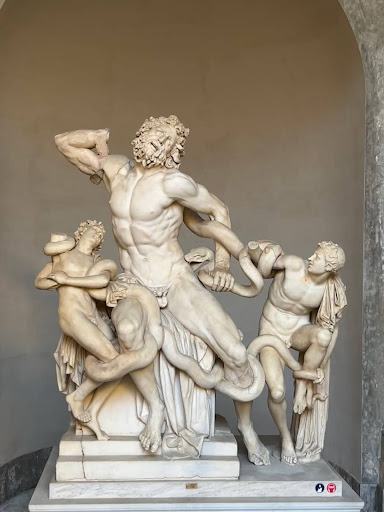
(fig.1) Laocoon and His Sons as seen in modern day at the Vatican Museum in Vatican City, Rome, Italy. Photo is property of the author, taken 12 Jan 2024.

(fig. 2) Reconstruction of the Tiberian Cave in Sperlonga: A) Group of Ulysses dragging the body of Achilles, B) Sculptural group of Scylla, C) Sculptural group of the blinding of Polyphemus, D) Sculptural group of the kidnapping of Palladium, E) Ganymede kidnapped by Zeus' eagle.
This is just a bite-size version of my larger research that I found interesting, I will definitely continue adding to it in a type of series because there are so many theories (including that it may be a Michelangelo forgery), and I want to go into mythological significance as well as reconstruction efforts.
#Laocoon#Laocoon statue group#myth#classic#classical literature#classical mythology#classics#ancient greece#imperial rome#Michelangelo#the trojan war#the trojan horse#Laocoon and His Sons#Hellenistic#Art#Sculpture#ancient history#art history#hyperfixation#rabbit hole researcher#ancient art#ancient#ancient civilizations#study notes#study motivation#rabbit hole research#college#college life
6 notes
·
View notes
Text

"You could die right now. Let this fact guide the rest of your life."
Marcus Aurelius Antoninus was Roman emperor from 161 to 180 AD and a Stoic philosopher.
#Roman Emperor#Stoicism#Meditations#Philosopher-King#Stoic Philosophy#Roman History#Wisdom#Leadership#Pax Romana#Classical Philosophy#Roman Leadership#Virtue Ethics#Emperor of Rome#Ancient Rome#Stoic Principles#Philosophy of Life#Aurelian Ethics#Imperial Rome#Roman Stoic#Stoic Virtues#quoteoftheday#today on tumblr
2 notes
·
View notes
Text
god what I wouldn't do for agrippina the younger's memoirs.
#Roman history#imperial rome#Agrippina the younger#Classics#uni tag#<-because im working on a paper about messalina right now and thats what made me think of this#College tag#also i may or may not have first become interested in messalina because her name sounds like messaline and im first and foremost shakesquee#Im interested in her for more reasonable reasons now but cant lie about what drew me to her
5 notes
·
View notes
Text









hermes aesthetic “domitians fuck toy”
misc. male characters masterlist
“Cause I knew too much, there was danger in the heat of my touch. He saw forever so he smashed it up. Oh, my boy only breaks his favorite toys.”
series: those about to die, 2024
#hermes#those about to die#tatd#alessandro bedetti#domitian#hermes and domitian#rome#ancient rome#circus maximus#imperial rome#tenax#domitian flavianus#titus flavianus#flavian dynasty#Spotify
53 notes
·
View notes
Text
Roman Holidays headcannon
Soooo ... picture Gus Holiday and son Groovius on an early-morning bonding-type session at the neighbourhood bath house, working up quite ths sweat in various sorts of games and exercises, including crude versions of handball, racquetball, squash and tennis such as were common in Roman times.
Which, mind you, is more or less the prelude for the bathing session, and Gus has Groovius along to introduce him to its pleasures and significance, especially the mixed-gender bathing of the caldedarium (hot bath), tepidarium (warm bath) and frigidarium (cold bath), in that order; mainly to release sweat and inner toxins, followed by a body rub session with volcanic sand or olive oil and the stigril (which could be compared to a modern cartridge razor, only made with animal bone or ivory) to keep the skin soft and supple.
(And Gus, for his part, wondering if Groovius, considering his youth, will likely have erotic fantasies stimulated by the effects of the bathing procedure.)
#hanna barbera#headcannons#fanfic prompt#the roman holidays#gus holiday#groovius#father son relationship#bath house session#imperial rome#and you wonder how it will all turn out#hannabarberaforever
1 note
·
View note
Text
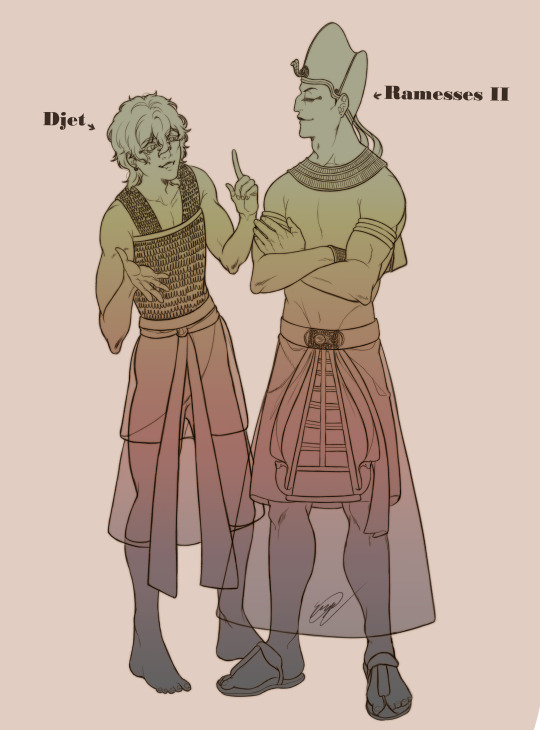









My webcomic characters ft. the historical characters they were close to!
#webcomic#ancient history#ancient egypt#amasis#ramesses ii#ptolemaic egypt#ancient rome#republican rome#cleopatra#mark antony#pharaonic egypt#ptolemy philadelphus#imperial rome#cleopatra selene ii#alexander helios#cleopatra vii#ptolemy xv#caesarion#the gracchi#tiberius sempronius gracchus#gaius sempronius gracchus#cornelia#hadrian#antinous#djet#khawy#iaret/chloe#sempronia#lucius#the followers of the divine snake
42 notes
·
View notes
Text
Tumblr Biography: Julius Caesar 🕊️
Born into an 👑 aristocratic family in around 100 BC, Julius Caesar grew up in ⚠️ dangerous times. But would he ⬆️ rise above the 💥 chaos or be 🍽️ consumed by it?
#b.c.#100 bc#aristocracy#plutocracy#plutocrat#dangerous#in danger#rise up#fall down#falling down#rise above#chaos#giving birth#julius caesar#pax romana#colosseum#roman forum#rome#ancient rome#roman empire#imperial rome#greek pantheon#st peter's basilica#trevi fountain#latin language#gaius julius caesar#gnaeus pompeius magnus#marcus licinius crassus
0 notes
Text
wanted: Lucian fans
Is anyone out here a fan of Lucian of Samosata?
The second-century Syrian-Greco-Roman satirist? He's fun, writes about very messy people.
I'm asking because I recently published a fantasy novel based on two of his most famous essays – "A True History" (a journey to the moon) and "Alexander the False Prophet" (Lucian's famous take-down of a cult). The book is written so that the reader doesn't have to be familiar with Lucian to enjoy it – but if you do know Lucian, there are lots of little Easter Eggs and inside jokes you might like.
The book itself isn't a satire, nor is it faithful historical fiction, but I like to think parts of it catch a bit of Lucian's flavor.
I'm really proud of this book and I'm trying to find its audience. So if it sounds interesting to you, go ahead and give it a look.
#lucian of samosata#ancient rome#imperial rome#greece#rome#ancient greece#lucian#writers on tumblr#writeblr#to the ravens#i feel like this is a shot in the dark#but you never know!
0 notes
Text

~ Sardonyx cameo portrait of the Emperor Augustus.
Period: Early Imperial, Claudian
Date: ca. A.D. 41–54
Culture: Roman
Medium: Sardonyx
#ancient#ancient art#history#museum#archeology#ancient sculpture#ancient history#archaeology#roman#ancient rome#sardonyx#Augustus#emperor#roman emperor#roman empire#cameo#portrait#claudian#imperial period#A.D. 41#A.D. 54
847 notes
·
View notes